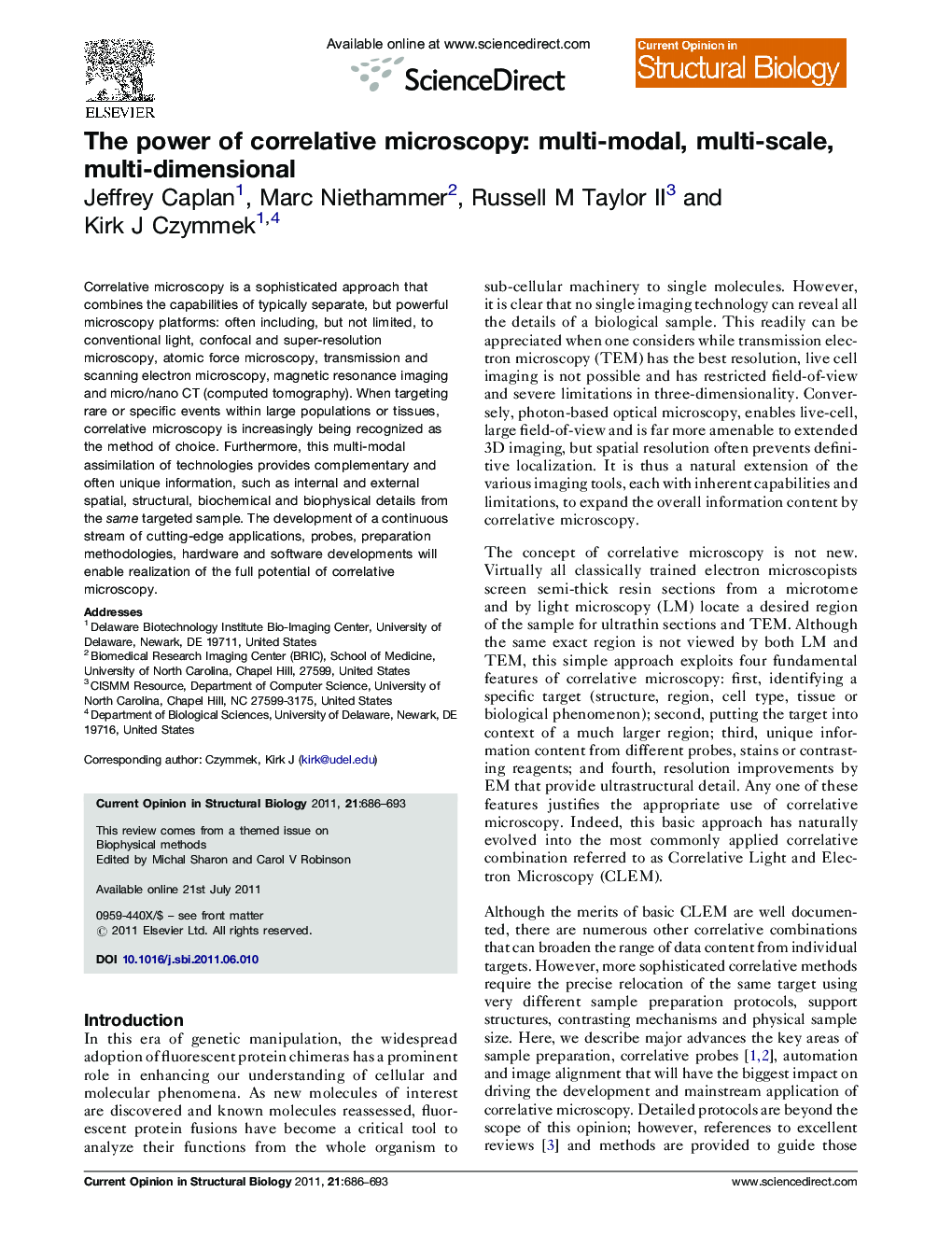| Article ID | Journal | Published Year | Pages | File Type |
|---|---|---|---|---|
| 1979247 | Current Opinion in Structural Biology | 2011 | 8 Pages |
Correlative microscopy is a sophisticated approach that combines the capabilities of typically separate, but powerful microscopy platforms: often including, but not limited, to conventional light, confocal and super-resolution microscopy, atomic force microscopy, transmission and scanning electron microscopy, magnetic resonance imaging and micro/nano CT (computed tomography). When targeting rare or specific events within large populations or tissues, correlative microscopy is increasingly being recognized as the method of choice. Furthermore, this multi-modal assimilation of technologies provides complementary and often unique information, such as internal and external spatial, structural, biochemical and biophysical details from the same targeted sample. The development of a continuous stream of cutting-edge applications, probes, preparation methodologies, hardware and software developments will enable realization of the full potential of correlative microscopy.
► Correlative microscopy combines multiple imaging platforms for targeted analysis. ► Sample preparation is critical for successful correlation. ► Probes which contrast at light and electron levels are discussed. ► Improved software and hardware tools for automation facilitate throughput. ► Value of correlative microscopy is enhanced by broader application and data integration.
